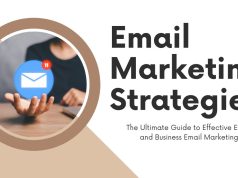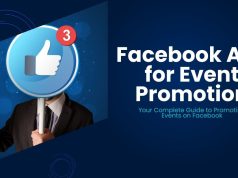While getting event sponsorships might seem a daunting task, it can also be the most important part of event planning. In addition to necessary funding, a thoughtfully designed sponsorship strategy gives your event added value and powerful new partnerships with brands.
This guide will show you how to do sponsorship marketing right. Develop a strong strategy, set up offers that are appealing and profitable for your sponsors, and find (or create) an event that sponsors want to pitch their tent at.
Why Sponsorships Are Vital for an Event
Before delving into the strategies, it is important to grasp the mutual benefits brought by sponsorships. To event organizers, sponsorships are financial support, services, or products that help enhance the event experience. As for sponsors, it is a chance to meet their intended audience, enhance brand visibility, and raise public good causes.
When done right, sponsorships create a win-win situation for both sides. That’s why marketing your event sponsorship effectively is timely.
How to Market Sponsorship for an Event
Understand Your Audience Before Approaching Sponsors
Sponsors are most interested in your audience, not just your event. They want to know who will attend, what their demographics are, and how they align with their target customers. Take the time to analyze your audience thoroughly.
Key questions to answer:
- What is the age range, gender, and location of your attendees?
- What are their interests or purchasing behaviors?
- Why would your audience find this sponsor relevant or appealing?
Use tools like surveys, past event data, and social media analytics to gather insights.
Example: A sports beverage brand may be a great fit if your event audience is active, health-conscious, and aged 18-35.
Create an Irresistible Sponsorship Proposal
Your sponsorship proposal is your calling card. It should outline what your event offers and, more importantly, how it benefits your potential sponsor.
What to Include in Your Proposal:
- Event Overview: Briefly explain the event’s purpose, target audience, and goals.
- Sponsorship Tiers: Offer customizable tiers with clearly defined benefits for each level (e.g., Silver, Gold, Platinum).
- Marketing Exposure: Detail how sponsors will be featured in your event’s promotions, social media, website, press releases, or even event materials.
- Metrics Promise: Provide data on how you’ll measure the success of their sponsorship (e.g., impressions, clicks, audience engagement).
Pro tip: Use visuals like charts or mockup designs to showcase how logos or branding might appear at the event. It’s easier to sell when sponsors can visualize the outcomes.
Leverage Your Event Market
Promote your sponsorship opportunities across all available channels, tailoring your marketing approach to resonate with potential sponsors. Here are key ways to capitalize on your event market:
1. Build a Compelling Event Website
Your event website isn’t just for ticket sales; it’s a critical sponsorship marketing platform. Dedicate a section to describing sponsorship opportunities and include downloadable brochures or contact forms. Make it visually appealing and ensure mobile compatibility.
2. Leverage Social Media and Email Campaigns
Social media platforms like LinkedIn are particularly effective for B2B sponsorship deals. Create professional posts showcasing the value of partnering with your event and directly tag target sponsors to draw attention. Email campaigns are also excellent for personalized pitch letters.
Sample Post Idea:
“Calling all brands ready to make a BIG impact! Our upcoming [Event Name] draws over 5,000 engaged attendees. Sponsorships are still open, and we’d love to showcase YOU. DM us for details!”
3. Attend Networking Events
Sometimes, the best way to market sponsorship is face-to-face. Attend networking events, trade shows, and local business meetups where you can connect with potential sponsors in person. A genuine conversation is often more persuasive than cold emails.
Offer Unique Sponsorship Perks
Sponsors need to perceive your event as a premium opportunity they can’t refuse. Going beyond traditional perks (e.g., logo placements) makes you stand out.
Examples of Unique Benefits:
- Exclusive Branding Zones: Offer sponsors prominent locations to display banners, such as entry areas or main stages.
- Interactive Product Displays: Allow sponsors to demonstrate their products in a hands-on way, giving them a direct connection with attendees.
- Digital Features: Offer branded virtual backgrounds for virtual attendees or sponsored hashtags on social platforms.
- Event Segments: Provide naming rights to specific portions of your event, such as “The [Sponsor Name] VIP Lounge.”
Build Relationships with Your Sponsors
Think of sponsorships as long-term relationships, not just one-off transactions. Even if a deal isn’t closed for your current event, nurturing connections can benefit future opportunities.
Tips for Relationship Development:
- Check in regularly, showing progress on ticket sales or event buzz.
- Offer behind-the-scenes updates that show sponsors how their involvement makes a difference.
- Follow up post-event with detailed performance reports showcasing sponsor ROI.
Sponsors will value how much effort you put into ensuring their success, making them more likely to partner with you next time.
Highlight Sponsorship Success Stories
Brands want proof that your event will deliver results. Sharing testimonials and stories from past sponsors can build credibility and attract new ones.
Example of a Sponsor Testimonial:
“Partnering with [Your Event Name] gave our brand exposure to a highly engaged audience. We saw a 30% increase in direct website traffic after the event.” – [Sponsor Name], Marketing Director.
Collecting tangible metrics is even better! Show evidence of previous sponsorship outcomes, like audience growth or campaign engagement statistics.
Closing the Deal with Confidence
Once potential sponsors show interest, engage them directly with confidence. Be ready to address concerns such as ROI, logistics, or additional customizations they may need. Clear communication and flexibility will often be the deciding factors in gaining their trust.
Make Sponsorship Work for Your Event Today
Marketing sponsorship for an event doesn’t need to be overwhelming. Once you know your audience, put together dedicated proposals and effectively utilize your event market in an effort to achieve these goals. You’ll find that meaningful partnerships will be drawn to your door and enhance at the same time, other people’s praise of the event.
If you want to take your event to the next level, start planning now how you plan to raise sponsorship. After all, every successful transaction comes from mutual understanding and mutual trust. With these strategies in mind, you’ll be well on the way to setting up long-term brand partnership deals.
Looking for more insights into event planning and sponsorship marketing? Bookmark our blog and subscribe for regular updates & actionable tips to improve your event marketing skills.









